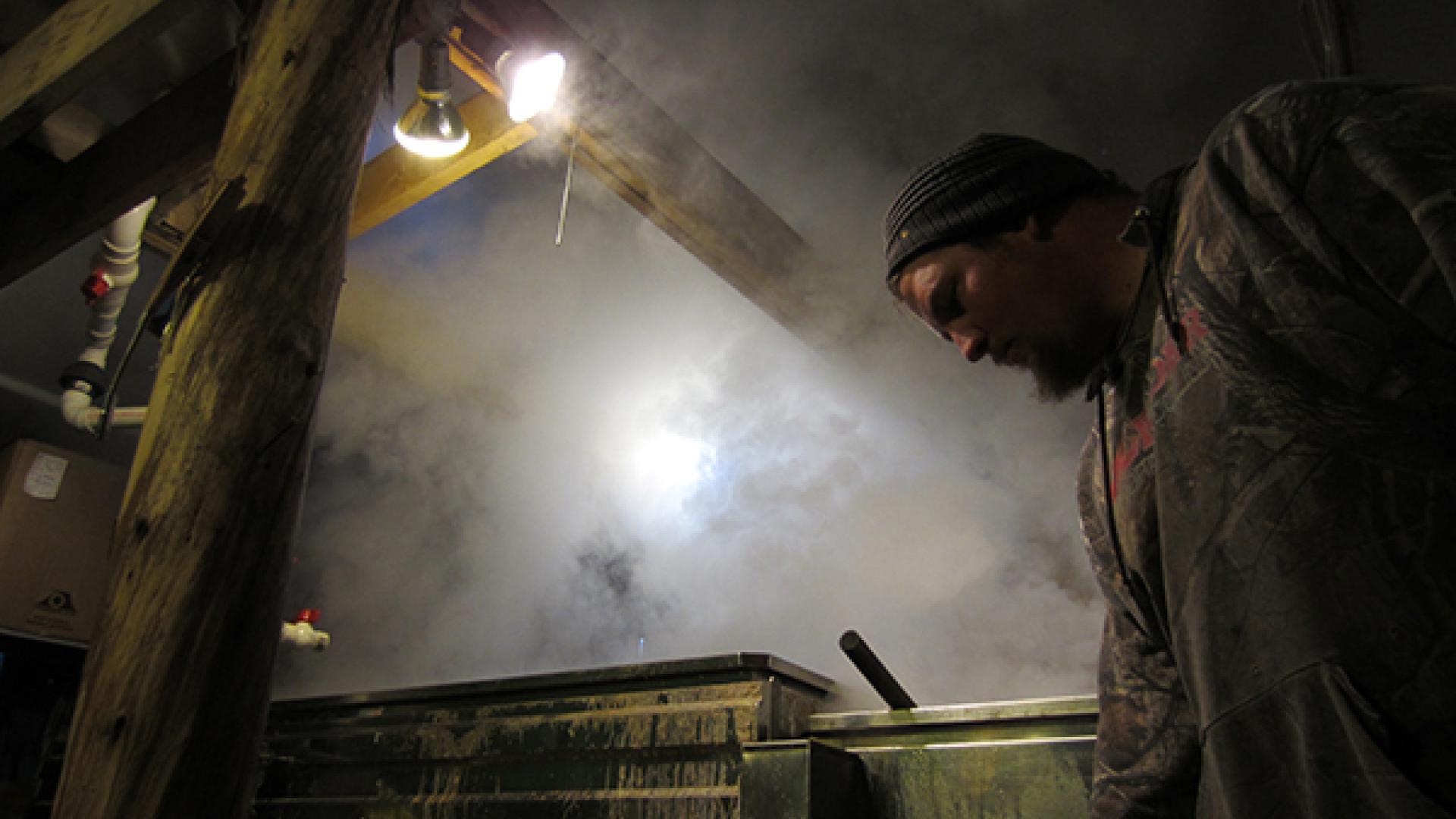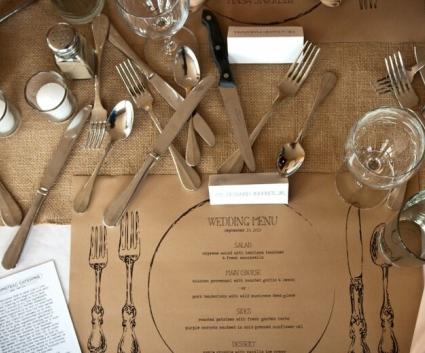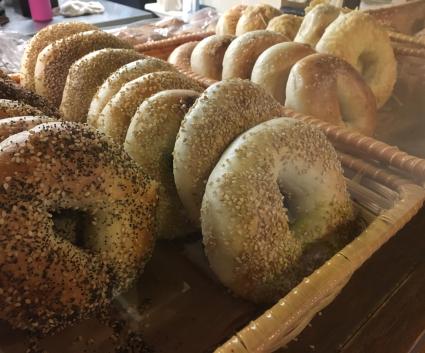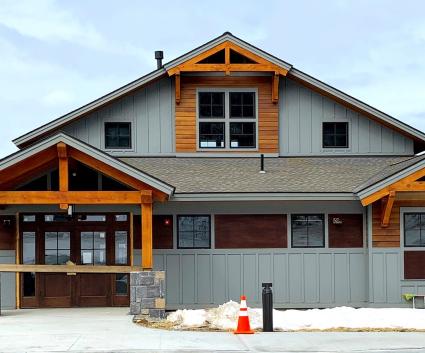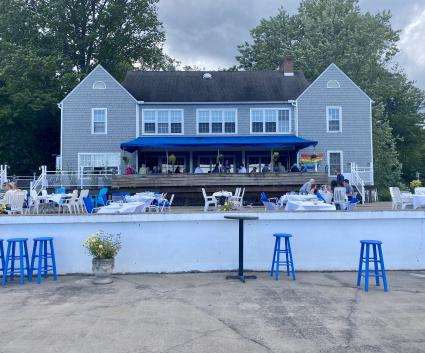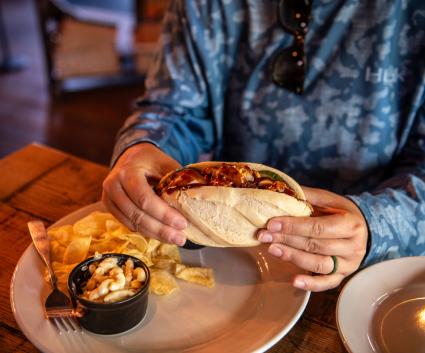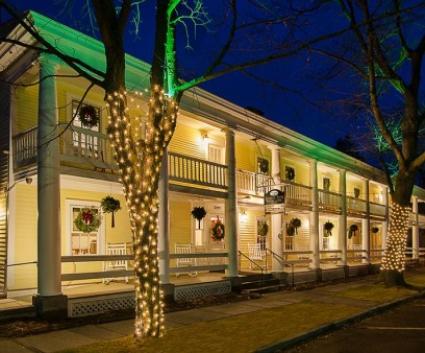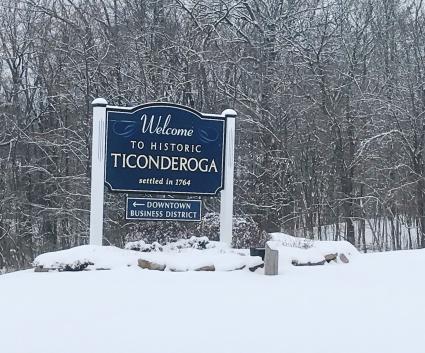Each March we are lucky to be treated to two NYS Maple Weekends - a celebration of that honorable upstate tradition of harvesting the sap of the sugar maple on the cusp of spring and boiling it down into maple syrup. However, here in the Lake Champlain Region, we love our maple all year long! If you are wondering where you can get some of the best maple syrup around, boy do I have a tip for you.
North Hill Maple Farm in Westport is a sixth generation family farm and they make the best darn maple syrup I’ve tasted. They’re not a huge operation by any means, but Kevin Sayre, the man behind the maple, is a true craftsman and his love of the process is apparent in the product.
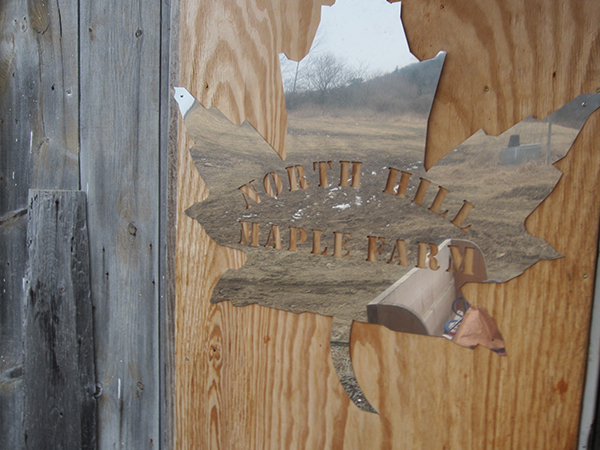
I’m about to take you behind the scenes of a sugar shack to show you the hard work that goes into the creation of that most delicious of local treats: maple syrup.
Like any labor-intensive process, practitioners like Kevin Sayre are always looking to reduce effort and increase yield. This leads to what Kevin calls “the maple bug,” an intense devotion to the process with an obsession to always do better, to tweak, and to improve. This tends to lead to an ever-evolving setup for anyone suffering from the affliction.
Kevin caught the “bug” when he was eleven or twelve, starting with a pan outside over an open fire. Over the years he has stuck with it, ending up with his current Leader brand setup. It looks about as efficient and manageable as a one-man operation can get, but he’ll float some ideas past you about what his future might hold. “Semi-permeable membranes” and “reverse osmosis” are terms he bandies about with enthusiasm, obviously the “bug” has not worked its way out of his system yet.
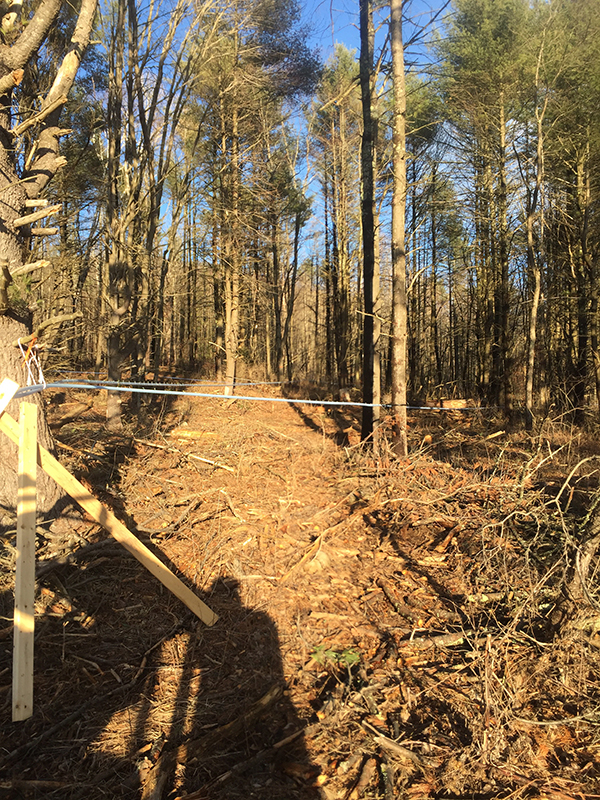
It’s been two years since North Hill Maple Farm has gone bucket-less, a huge step forward in reducing the labor involved in mapling.
As the trees respond to freezing nights and thawing days, the sap runs from the roots to the branch tips. The trees won’t mind if we divert a bit of it down these long tubes into the vacuum collector. This manifold is the meeting place of all the lines.
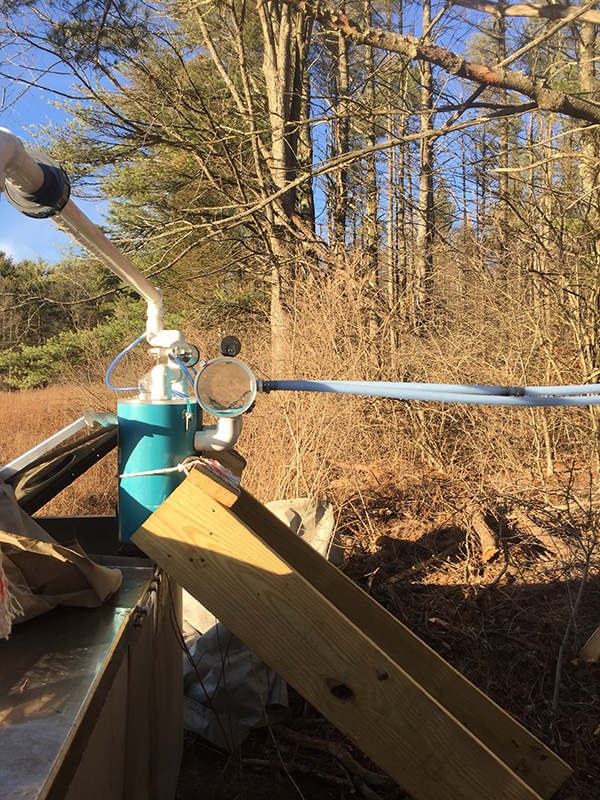
Keep it coming! There’s plenty of room in the vacuum collector.
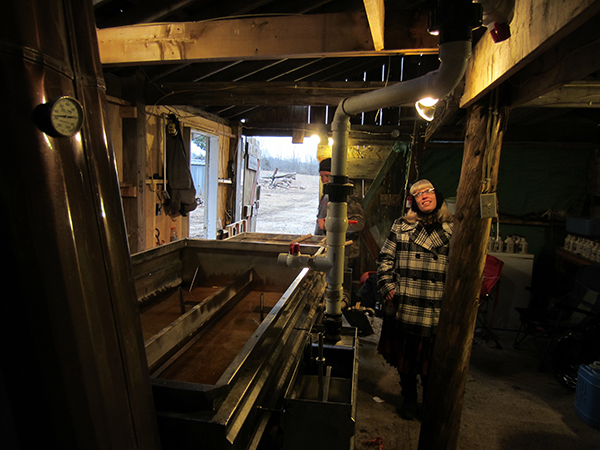
Here is a shot of North Hill Maple Farm’s rig. It’s quite a setup, capable of processing 100 gallons of sap an hour. Tonight, to stay ahead of sap production, the boiler will be run for four hours.
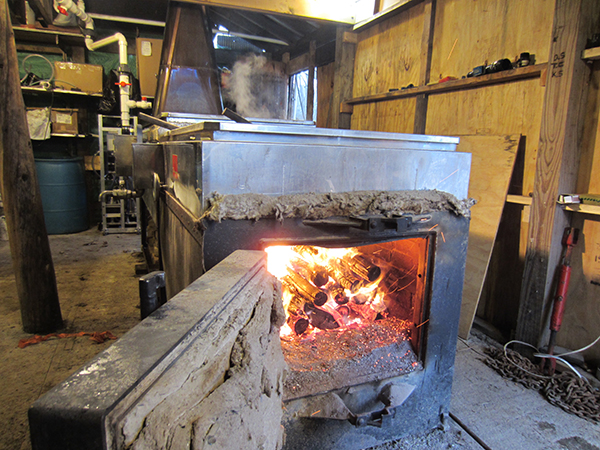
The heart of the maple syrup boiler is the firebox. The fire will be stoked with wood all night. An electric blower will create intense heat. The gases leaving the other end of the boiler will range between 800 and 1200 degrees Fahrenheit. The optimal temperature is between 850 and 900 degrees.
Because of the frigid weather, the cold pans are a combination of sugary slush and frozen water, Kevin has to raise the temperature slowly so as not to damage the setup.
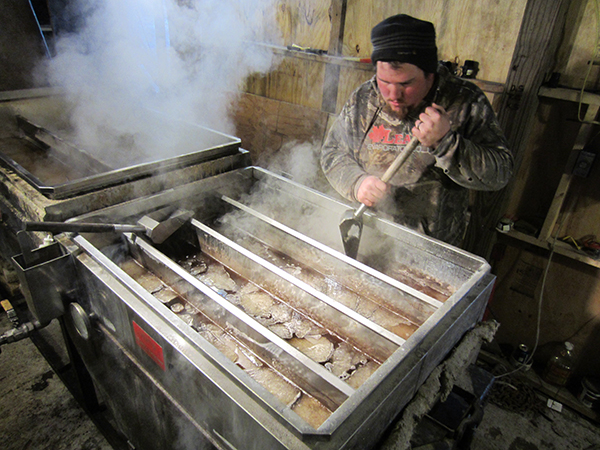
The temperature is rising and Kevin “breaks the ice,” conversationally as well as literally, explaining the process as he works.
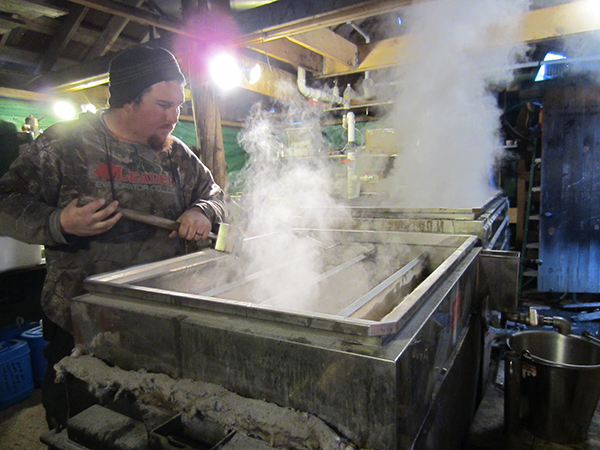
Steam! In the coldness of the sugar shack the first plume of steam is a welcome sign.
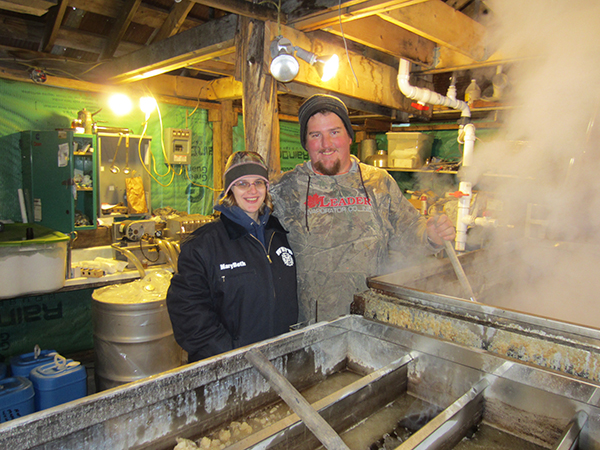
With the fire stoked and the temperature rising, there was a break in the action long enough for Kevin to introduce his charming wife, MaryBeth, who is an old hand at running the operation herself, when need be.
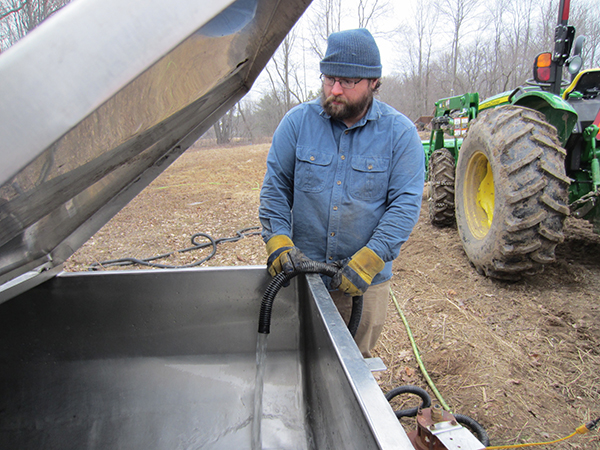
While the boiler is warming up, Kevin's brother Ken Sayre has brought a load of collected sap to the shack and is pumping it from the back of the tractor into a large stainless holding tank. All of the Sayre family lend a hand as the work never stops once the sap starts running.
From the holding tank, the sap is pumped to a hopper in the rafters of the shack.
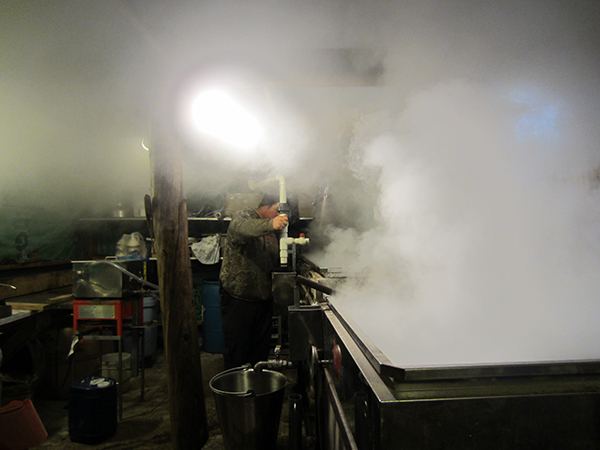
Once the boiler pans are thawed, Kevin opens the valve from the hopper…
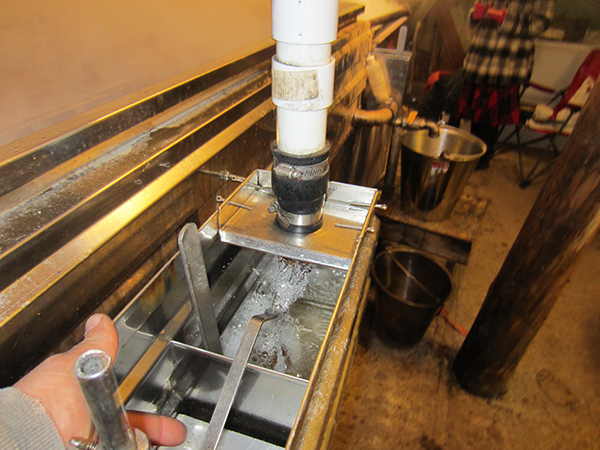
…and a float valve controls the flow of sap into the pans without the need to monitor the input.
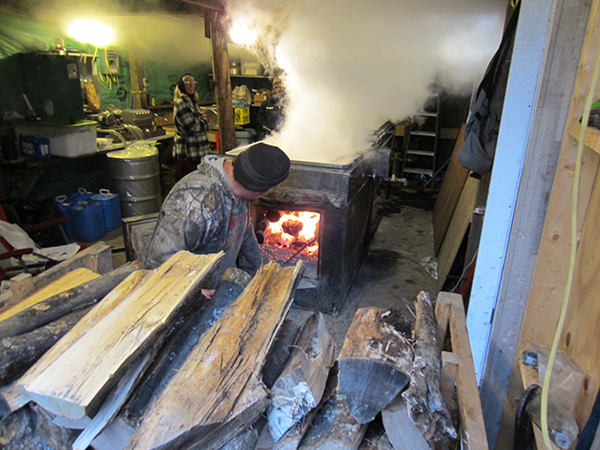
The firebox will burn through the hardwood very fast. The main job remaining is to tend the fire, loading it about every 5 minutes throughout the night.
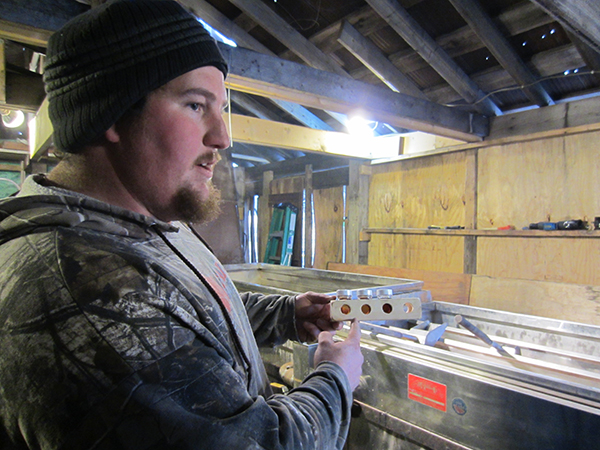
With the fire stoked again, Kevin has a few minutes to explain the maple grades. I didn’t interrupt him, but being raised on the old-time “cooking grade” maple syrup, I know there is only one real grade, that being “dark as you can make it!”
As anyone passionate about his work does, Kevin talks about the process in detail for our edification. He showed us the hydrometer and explained how essential it is in knowing when he has reached the correct specific gravity at a temperature of precisely 219 degrees Fahrenheit. If I may paraphrase Kevin’s technical explanation: this little floaty bobber-thingy says “it’s syrup!” See, I did learn something while I was there!
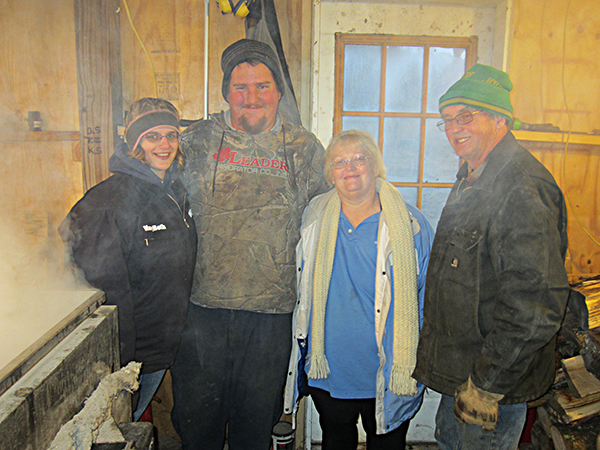
One thing that is common the world over is that when you light a fire in a sugar shack, family and friends tend to gather round. There’s just something communal about the warm, smoky, steamy experience. A few wood-loads into this run, Kevin’s parents, Dave and Tracey Sayre, stopped in to see if an extra hand or two were needed. While Kevin prepared the filter pump, the rest of us got to relax and hang out in a sweet smoky sauna!
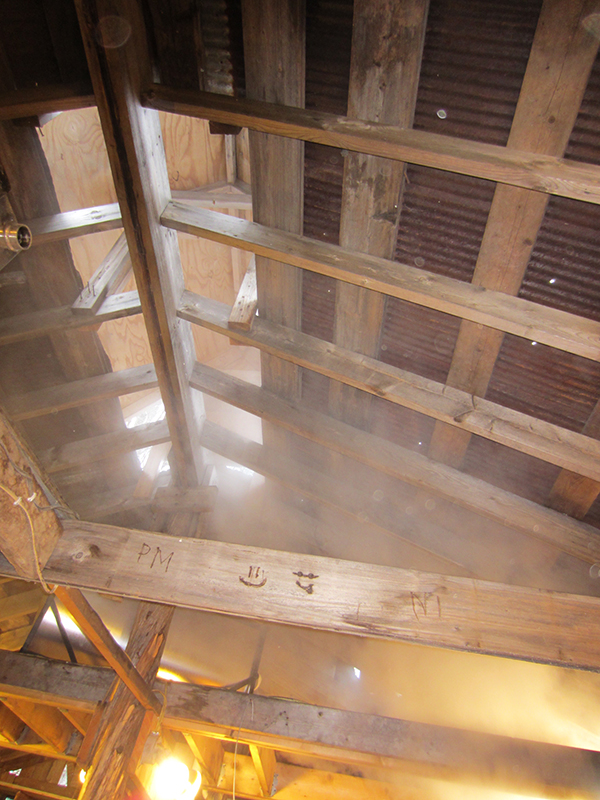
Where does all this steam go? Well, up… it need not be elaborate, just a hole to let the steam out and to keep the weather from coming in.
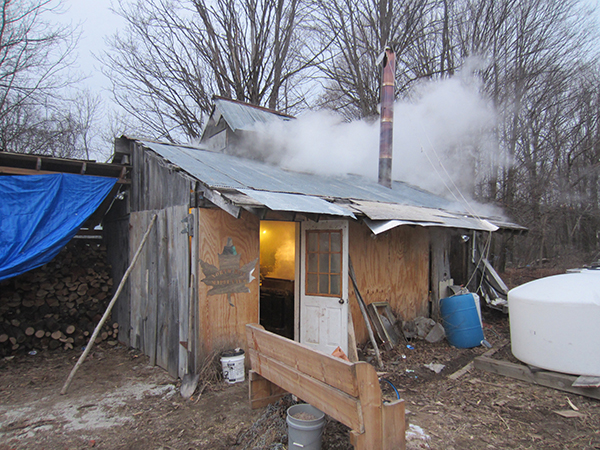
Here is the hand-built sugar shack at full boil. Notice that it is all steam coming out the roof vent and no visible smoke from the stack. This is an indication of how clean the rig is burning. If you study this picture, you may notice many ingenuities such as the damper high on the stack that is operated by hand at ground level.
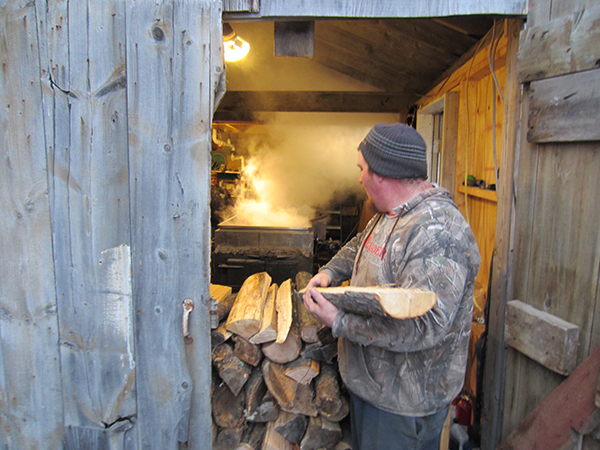
Time to restock the wood supply! North Hill Maple Farm goes through about twelve cords of hardwood a season, including oak, beech, shagbark hickory, and ironwood. It is always uncomfortably amusing to be a woodworker and visit such a farm, seeing seasoned wood you couldn’t afford to buy at a lumber store going into the firebox. Goodbye beech socket-chisel handles! Goodbye hickory axe helve! So long ironwood maul! Into the firebox with all of you! Ah well, at least they burn hot as Hades to bring forth sweet maple goodness.
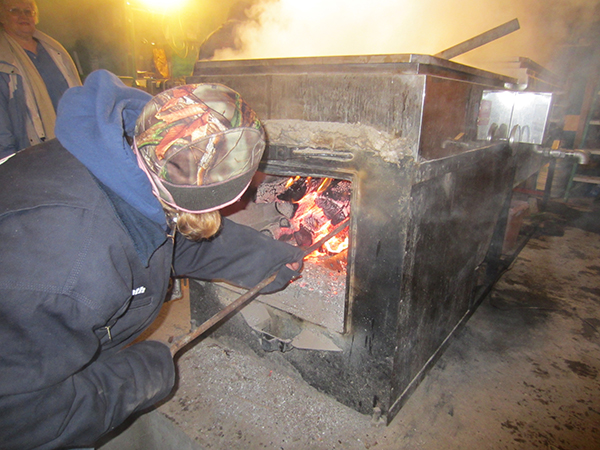
As the night wears on, whoever is handy feeds the ever-hungry fire. Here MaryBeth heaves some mighty big logs in.
While we were there, we were surprised with a gift! MaryBeth presented a jug of syrup to me and the missus. The Sayres were very welcoming and hospitable hosts and made us feel right at home during the time we spent with them. I thank them for letting us into their steamy sanctuary for the evening.
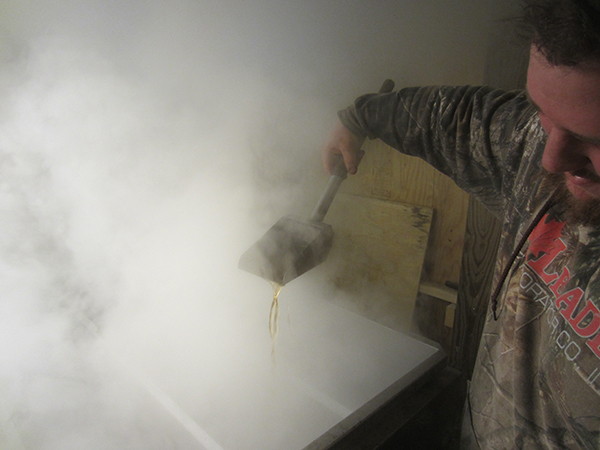
Even without the hydrometer, the seasoned maple syrup producer will know when the sap has turned to syrup. Here Kevin is using the pourer. When he sees a sheeting action of the liquid running off, he knows it is time.
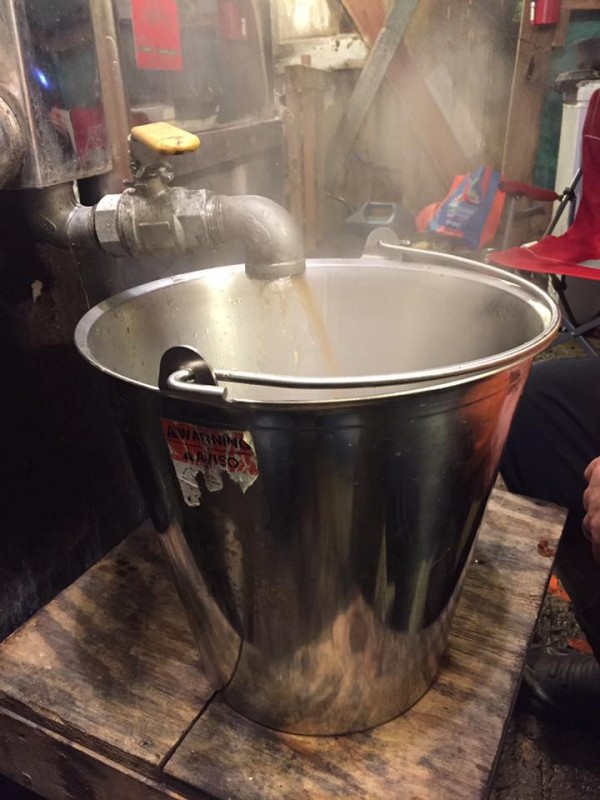
Once the hydrometer confirms that the proper stage has been reached, the hot syrup is drawn off into pails. It is then filtered and stored, to be packaged and labeled. Next stop- your breakfast table!
You don’t need to wait for a special occasion such as Maple Weekend to sample some of the finest maple syrup the Adirondacks have to offer. Head over to Flower Designs by Tracey and get yourself some - tell ‘em Kyle sent you!
Plan your spring trip to the Lake Champlain Region now! We've got cozy accommodations and delightful villages just waiting to be explored. And, don't forget to take home your own sweet taste of the Lake Champlain Region!

